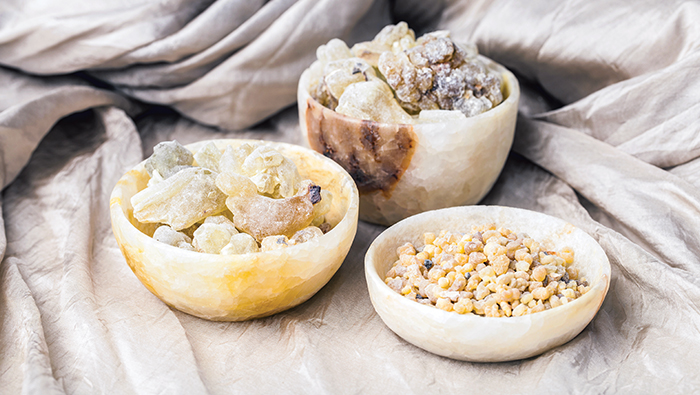
Nestled on the southeastern coast of the Arabian Peninsula, Oman is a land of enchanting landscapes, rich heritage, and a profound connection to one of the world’s oldest and most revered natural substances—frankincense. Known as the “tears of the gods,” frankincense has been prized for thousands of years for its aromatic resin, spiritual significance, and healing properties. The story of Omani frankincense is a captivating journey through history, culture, and tradition.
Frankincense is derived from the resin of the Boswellia tree, which thrives in the arid climates of Oman, Yemen, and Somalia. In Oman, particularly in the Dhofar region, the Boswellia sacra species is the source of the highest quality frankincense. The trees are tapped in the spring, with careful incisions made in their bark to release the precious resin. As the resin dries, it forms tear-shaped droplets that are collected and later processed.
The ancient method of harvesting frankincense has remained largely unchanged over millennia, reflecting the deep respect and reverence for this natural treasure. The resin is sorted by hand, with the purest and clearest pieces reserved for the highest grades, which are highly sought after for their superior aroma and therapeutic qualities.
The significance of frankincense in Oman can be traced back to antiquity. The incense trade routes, known as the Incense Road, connected the Arabian Peninsula to the Mediterranean, India, and beyond. Frankincense was a cornerstone of commerce, with caravans transporting the resin across vast deserts to meet the demands of ancient civilizations. It was burned in temples, used in religious rituals, and prized for its medicinal properties.
Omani frankincense played a vital role in the cultural and economic life of the region. The ancient city of Ubar, often referred to as the “Atlantis of the Sands,” was a thriving center of the frankincense trade. Archaeological discoveries in Oman, including the UNESCO World Heritage sites of the Land of Frankincense, offer a glimpse into the historical importance of this resin and its enduring legacy.
In Omani culture, frankincense is more than just a commodity; it is an integral part of daily life and traditions.
The aroma of burning frankincense is a common scent in Omani homes, used to cleanse and purify the air. It is also a symbol of hospitality, with guests often greeted by the fragrant smoke of burning frankincense as a gesture of welcome and respect.
The spiritual significance of frankincense is profound. In various religious traditions, including Christianity, Judaism, and Islam, frankincense is used in ceremonies and rituals. Its ability to produce a calming, meditative state has made it a staple in spiritual practices, enhancing prayer and reflection.
The uses of frankincense have evolved, but its allure remains timeless. Modern science has uncovered numerous health benefits associated with frankincense. It is used in aromatherapy to reduce stress, enhance mood, and improve concentration. The essential oil derived from frankincense resin is known for its anti-inflammatory and analgesic properties, making it a popular ingredient in natural health and beauty products.
In traditional medicine, frankincense is used to treat a variety of ailments, from digestive issues to respiratory conditions. Its potent anti-inflammatory effects are beneficial in managing chronic conditions like arthritis.
Furthermore, ongoing research suggests that compounds found in frankincense may have potential anti-cancer properties, opening new avenues for medical applications. Efforts to preserve and sustain the frankincense trees of Oman are crucial to maintaining this ancient heritage. Over-harvesting, climate change, and habitat destruction pose significant threats to the Boswellia trees. Conservation initiatives aim to protect these trees, ensuring that they continue to thrive and produce resin for future generations.
Organisations and local communities are working together to implement sustainable harvesting practices, promote reforestation, and raise awareness about the importance of frankincense.
These efforts are essential in safeguarding the ecological and cultural legacy of frankincense in Oman.
Frankincense of Oman is more than a fragrant resin; it is a symbol of a rich cultural heritage, a testament to ancient traditions, and a source of modern health benefits. The story of Omani frankincense is a journey through time, highlighting the profound connection between nature and human civilization. As we continue to uncover its secrets and embrace its uses, frankincense remains a timeless treasure of the Arabian Peninsula, cherished for its beauty, aroma, and healing power.
* Besides being a dynamic Entrepreneur and CEO of SYNERGGIE Oman, Bhavna is an HR expert, a writer, intuitive energy healer, Reiki Master, miracle coach, motivational speaker.